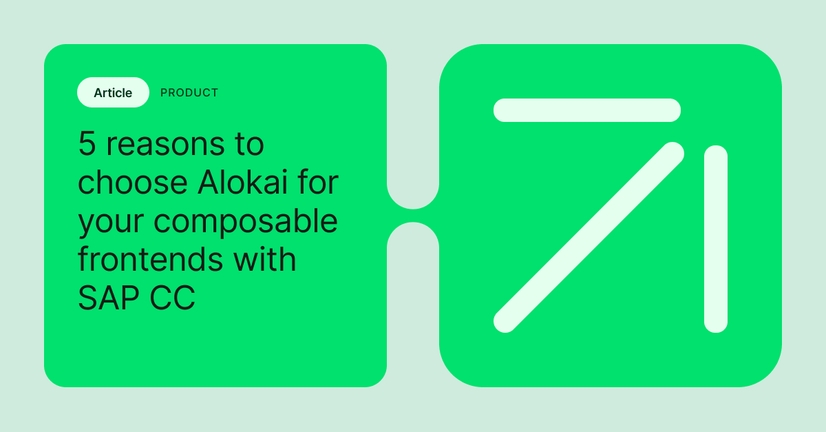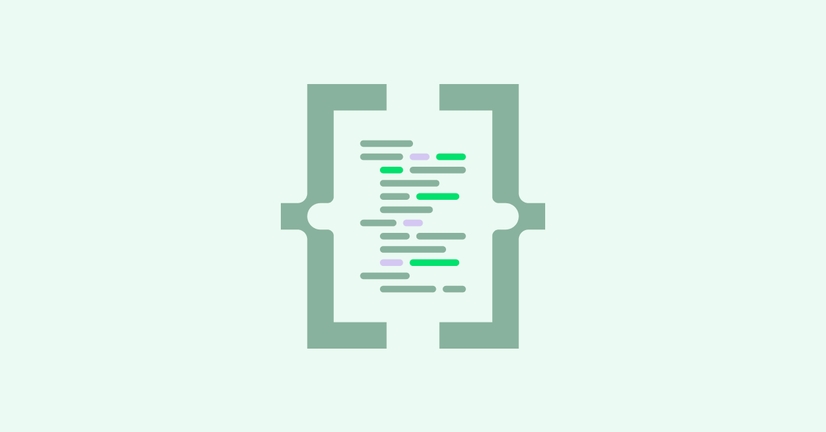Explore by Category:
Product
With the growing popularity of Alokai, we continue to aim high. We’d like to become the industry standard for eCommerce frontends. This means duplicating the leadership status we’ve gained in the Magento PWA world across all other platforms, including custom backends. In order to do this, it is not enough to develop just a single product. Alokai is, therefore, an ecosystem of developers' tools enabling fast and nimble implementations of modern commerce storefronts. This is your quick and easy guide through the Alokai ecosystem of tools.
Early days of Alokai
It all started in 2017 with Alokai 0.1, released on Meet Magento NYC . We were first to the market with a stable solution that included most of the Magento features. The funny thing is that today, three years later, we’ve managed to maintain this status despite a growing number of other storefront solutions . We’re pretty proud of this but are even more enthused by our installment and customer base including 60+ production sites for such brands as Zadig & Voltaire, Tally Weijl, Lampenwelt, Danone, and others.
This community we’ve built, as well as the partners who have placed their trust in us, only strengthens our commitment to developing this product further.
The current state of the Alokai ecosystem
As time has passed, our product has continued to grow and evolve. By learning and responding to the needs of our customers and partners, we have developed our product, a Frontend Platform for headless commerce, which today offers:
- Storefront UI to Build & Customize with UI Library
Alokai , which consists of - Middleware to connect via API Orchestration & ready integrations,
- Frontend framework packed with extra features to accelerate work,
- Platform to host & launch VSF-based projects
That’s the general overview of the ecosystem of tools for developers Alokai provides. Let’s take a closer look at each of the components.
Step 1. Build and customize with Storefront UI
Storefront UI is a setup to provide a flexible and fully customizable white label design system and UI for eCommerce. We aimed to simplify each aspect of building modern storefronts for headless commerce.
At the very beginning of any front eCommerce development, there is a lot of repetitive groundwork that needs to happen. At this stage Alokai with Storefront UI, to support fast processes provides this perfect starting point. All the groundwork is already done. We supply a complete eCommerce theme: a whole design system and UI built with a PWA approach, SSR ready with almost all the code exposed, and ready for scaling and customizing in any direction merchant decides to take it.
Step 2. Connect with Alokai API orchestration
Alokai takes care of every aspect of a good eCommerce front-end undertaking. To connect and maintain a high-performing storefront we equipped our platform with dedicated middleware that connects all the components. Acting like an umbrella keeps the modern eCommerce ecosystem running.
Our API Orchestration merges all eCommerce services under a single API. One can connect any services of the choice. At this stage, VSF easily links different data sources and enriches and caches them to optimize frontend requests. In addition, we have developed more than 20 out-of-the-box integrations with the most popular tools, CMSs, eCommerce Platforms, and a long and growing list of 3rd party services to enable quick stack switches. Stay tuned for more!
What else? For a better development experience and to save development hours VSF can run within the nuxt.js process. That means the whole project with frontend and gateway can be bootstrapped with a Single CLI command in a single process without any kind of virtualization.
Step 3. Accelerate with a flexible Frontend Framework
Because of the complexity and the need for custom development, instead of limiting the capabilities of the frontend solution, we keep Alokai as flexible as possible. In the hands of developers it becomes a powerful tool that allows for endless iterations to be made at the eCommerce front-end.
We provide built-in caching to reduce server load and improve performance . Also, Alokai takes care of complex multi-brand, multi-region cases by allowing you to have multiple themes for a shared UI. These are just some of the examples of where we continue to find ways to improve performance and handle complex use cases, and we will keep identifying these.
A ready and agile framework saves hundreds of hours of ground development. This allows merchants to focus on optimal solutions and customization while Alokai ensures performance.
Step 4. Host & Launch with optimized infrastructure for VSF
To support and keep entire eCommerce developments safe and stable we created a dedicated platform. Alokai’s hosting platform is optimized for the speed of the Alokai framework. Of course, as a part of our flexible policy, no merchant is obligated to use the platform. However, our platform is fully compatible with the framework’s architecture, making it probably the best option for hosting sites based on Alokai. We know how it’s designed and we are 100% focused on optimizing this particular technology stack.
To support the entire cycle of frontend developments, after deploying a website, we soon plan to introduce dedicated analytics focused on speed and conversion. This will simplify tracking how the eCommerce performs, where users are abandoning, what their journies are like, and so on.
What else comes with Alokai?
Continuous improvement, new integrations, and developments. As the entire market and technologies are advancing, so are we. In addition to an ecosystem of powerful tools to support complex front-end solutions, Alokai is also one of the largest communities.
Check the video, Marc Backes, our Developer Advocate , prepared to explain better Alokai's frontend and middleware!
Everyone is invited to join our Discord to explore community-supported extra features and integrations. Anyone can contribute, find support, and exchange good practices. We keep our solution Open Source, so any business can benefit from new updates and advances.
In addition, our comprehensive Enterprise version covers integrations with commercetools , Elastic Path , and BigCommerce . In the package with ready-to-use integrations, we offer a Customer Success team that actively supports implementation and helps diagnose potential bottlenecks. We believe that together more can be accomplished, so we proactively support the community field as well as Client Success.
Alokai Open Source vs Alokai Enterprise - What are the differences? Check!
Alokai is a go-to Frontend Platform for modern commerce
That’s a bold statement, we know. However, within a relatively short existence on a market and many accomplishments, we feel safe in declaring that Alokai with its agile yet comprehensive approach supports any kind of eCommerce on the road to flexible and easy frontend developments. Still have doubts?
+1000 online stores already run on Alokai!
Share:
Share:
More in Product
Ready to dive in? Schedule a demo
Get a live, personalised demo with one of our awesome product specialists.





















